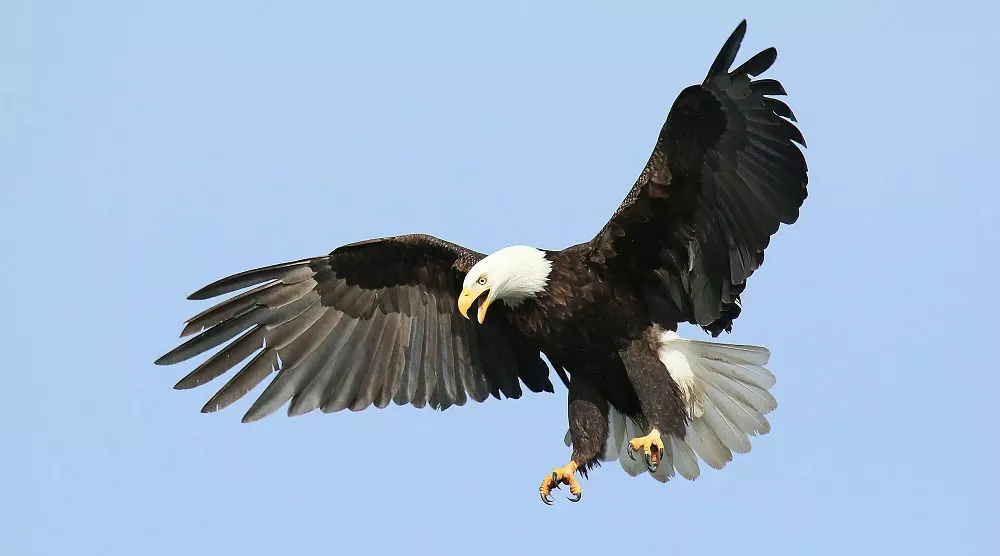The bald eagle is a majestic bird of prey that is found in North America. They are known for their distinctive white head and tail feathers, powerful hooked beaks, and strong talons. As apex predators, bald eagles have a varied diet that includes fish, small mammals, birds, and carrion.
- Fish:
Bald eagles are primarily fish eaters, and fish make up the majority of their diet. They are expert fishers and can swoop down and grab fish from the water’s surface with their sharp talons. Bald eagles prefer to hunt for fish near the water’s edge, where fish are abundant and easier to catch. They are known to prey on a variety of fish, including salmon, trout, catfish, and herring.
- Small mammals and birds:
In addition to fish, bald eagles also hunt for small mammals and birds. They will hunt for rodents, rabbits, squirrels, and even small deer. Bald eagles will also prey on smaller birds, such as ducks, geese, and gulls.
- Carrion:
Bald eagles are also scavengers and will feed on carrion, which is the flesh of dead animals. They will often scavenge from roadkill or other animal carcasses. Bald eagles are opportunistic feeders and will take advantage of any food source that is available to them.
- Behavior:
Bald eagles are solitary hunters and will typically hunt and feed alone. However, they are also known to hunt in pairs, particularly during the breeding season when they are raising their young. Bald eagles will store food in a cache for later consumption, particularly during the winter months when food is scarce.
The bald eagle is an impressive bird of prey that has a varied diet. They primarily feed on fish but will also hunt for small mammals and birds and scavenge for carrion. As apex predators, they play a vital role in maintaining the balance of the ecosystem. It is essential to protect and conserve these majestic birds, as they are an important part of North America’s natural heritage.


 Facebook
Facebook  Instagram
Instagram  Youtube
Youtube 